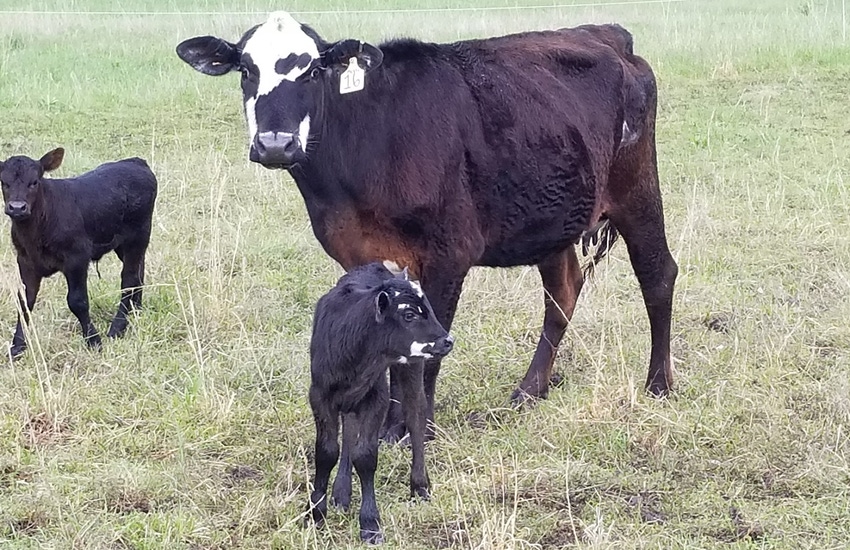April 10, 2020

If you lived through the deluge of 2019, you probably enjoyed the effects of the low-nutrient, washy grass the year produced. And by enjoyed, I mean cried over your calves being significantly lighter in the fall and seeing more cows open.
In our practice area, we saw 7% more cows open than the year prior. Preg checking this past fall was a painful experience for me, going from one farm to the next bringing the sad news to already frustrated cow-calf producers.
Many were flabbergasted at the results. “But the grass looked so good!” was a common phrase I heard when I explained the situation to people. But as the old saying goes, you can’t always judge a book by its cover. The looks were deceiving.
When grass deceives
How deceiving were they? I first was clued into this problem by my co-worker who is a nutritionist. She tested a couple of pastures in southern Nebraska because she was suspicious of poor forage quality. The results about floored me.
Grass that was normally high-quality was running a significantly lower protein level than normal, on both an as-fed and dry-matter basis. More important, the level was too low to for a cow’s requirements. Due to natural limits on what a cow will consume, many cows could simply not eat enough grass to effectively maintain their weight, nurse a calf and then rebreed. This led to the aforementioned effects we observed last fall.
If there is a silver lining, it’s that natural selection just made a big push toward a more efficient cow herd for the future. Although I did not collect the data on this topic, it was evident that people who selected cows to match their environment took less of a hit than those who selected simply for heavier calves. Still, everyone was unhappy with their conception rates.
Test standing forage
The most valuable lesson I received from this experience was that testing standing forage allows us to identify when problems are developing so we can make contingency plans. It is a simple procedure and is accomplished using the same tests we use for harvested forages.
To test a pasture, cut random samples from several spots across the pasture. To select a random area, throw a hula-hoop in the air. Where it lands, clip the forage there to the level a cow would graze and store that forage in a shipping bag. Try not to let any of the small clippings fall to the ground, as they are just as important in the final results. Combine multiple samples together, and then ship these samples to the lab for testing. A key factor is to keep the samples cool, as they may dehydrate quickly, which would skew the ability for your nutritionist to determine consumption rates for the cow.
How to use the information
Based on the results from our forage test, we can now modify both short- and long-term plans for our operation. In the short-term, we may need to change our grazing management plan if we have different nutrient levels between pastures. In certain shortage situations, we may need to strategically supplement protein for a period of time. Don’t confuse strategic supplementation with simple cow feeding—testing gives us confidence our decision is done scientifically. We certainly want to avoid over-supplementing, which does nothing more than take money directly out of our pockets. A supplement should buttress the extremes, not replace a solid grazing plan or prop up inefficient cows.
Multiple years’ worth of forage testing also helps us with our long-term goal of identifying the kind of cow that works for our ranch. If we know what our grass normally contains, we can compare this to the kind of cows we are running. To take an extreme example, if we can’t produce the kind of forage that will effectively allow a 1,500-pound cow to conceive and rebreed based on her nutritional requirements, then why should we keep that cow? The fact that she may rebreed some of the time is still no excuse for the fact she will be more likely to come up open than her smaller counterparts.
Most of us find poor conception rates in our cows unacceptable. Once we have a heifer that has bred, we’d like her to stay a productive cow for nearly a decade. But we won’t know if we are selecting the right kind of heifers, or if extreme weather events aren’t making the kind of grass that will support her, if we don’t know what’s in that grass. As another old adage goes, “knowledge is power.” Give yourself that power by testing your forage so you can make profitable decisions for your cow herd this year.
The opinions of the author are not necessarily those of Beef Producer or Farm Progress.
You May Also Like




